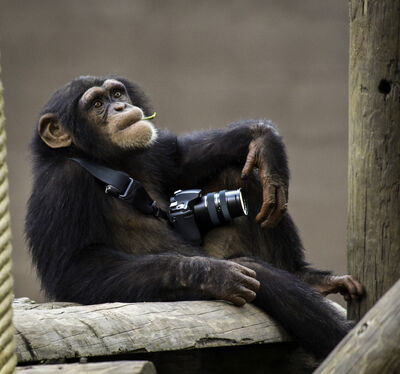Focus Stacking - Need Not Be Expensive
Jul 29, 2021 05:46:47 #
sippyjug104 wrote:
I've shared what I see through my magnified lenses... (show quote)
You do fantastic work Gary!!!!
I just don't have the patience to sit there for hundreds of shots and while advancing the focus I find myself trying to see what is in focus, ( and that don't work) So you have no competition from me
 for the time being.
for the time being.My other hobbies suck up all my extra money and the Wemacro rail will be the only way to go for me.
Thank you for the fantastic images and all the info.
Jul 29, 2021 07:52:50 #
Fantastic information! Now to start collecting specimens for this winter...
Jul 29, 2021 08:06:56 #
Jul 29, 2021 09:24:22 #
Jul 29, 2021 10:42:50 #
Jul 29, 2021 12:34:25 #
I heartily second all of this. Also focus stacking can be done with any lens, including a zoom lens, if you want to do stacking of things like flowers or a perched dragonfly. Just nudge the focus ring a little. Most times, movement artifacts can be cleared up in post.
Jul 29, 2021 13:17:31 #
sippyjug104 wrote:
I've shared what I see through my magnified lenses... (show quote)
Thanks for the info Sippy. I have two questions if you have the time...
1. Will the 4X microscope lens give more magnification or better IQ than the 4-4.5X Zhongyi I purchased recently? It seems to work pretty well provided I use it at f/2 or f/2.8.
2. How do you attach the 4X lens? Do step rings go down that far?
Thanks, JackM
Jul 29, 2021 13:58:03 #
sippyjug104 wrote:
Thanks, Joe. My hopes were to share that if anyone would ever have an interest in doing this that they should not be put off by thinking that there is a big investment to do so and it can be done in the comfort of their home year-round.
Wonderful info. Always look forward to your posts. Thanks
Jul 29, 2021 14:24:50 #
Denny142
Loc: Kentucky, Maui
I started with a manual focus rail, but have moved on to the WeMacro rail. Using it with Helicon Remote to control the focus rail and all camera functions from the computer monitor, the images can be auto-imported into Lightroom Classic, and stacked with Helicon Focus as a Lightroom plug-in. A stacked dng file is returned to Lightroom that can further be edited in Lightroom and Photoshop. I have been using the WeMacro rail for a couple of years now.
Jul 29, 2021 17:46:28 #
AzGriz
Loc: Sedona, Arizona
sippyjug104 wrote:
I've shared what I see through my magnified lenses... (show quote)
How do you attach the objective lens or the enlarger lens to the bellows? I use the Nikon bellows. Thanks
Jul 29, 2021 20:05:22 #
sippyjug104 wrote:
I've shared what I see through my magnified lenses... (show quote)
No matter what, Sippy, but I think it really takes you, your commitment, experience, patience, and skills to produce these pictures the way they are presented! Hats off!
Jul 29, 2021 23:11:16 #
Mark Sturtevant wrote:
I heartily second all of this. Also focus stacking can be done with any lens, including a zoom lens, if you want to do stacking of things like flowers or a perched dragonfly. Just nudge the focus ring a little. Most times, movement artifacts can be cleared up in post.
Hello again, Mark. Please clarify for me: Movement artifact is blurriness. How is that cleared up in post? Isn't there a useful limit to the sharpening tool, ie, too much sharpening produces an unnatural look?
NY
Jul 29, 2021 23:58:13 #
Mark Sturtevant wrote:
I heartily second all of this. Also focus stacking can be done with any lens, including a zoom lens, if you want to do stacking of things like flowers or a perched dragonfly. Just nudge the focus ring a little. Most times, movement artifacts can be cleared up in post.
Thanks, Mark. One of the often overlooked methods of being creative with extreme close up detail is to use a wide angle lens. It also captures the environment which adds visual interest and information about the subject. It may not be a true macro yet it has a great place in the salad of possibilities. A step up would be a wide angle macro although the standard wide angle is more multi-purpose.
Shots in the field taken at different depths of focus can be stacked from just a few shots to produce stunning images and again, most often any lens can be used so we should all enjoy what we have at hand.
My goal was to share that we don't need to make a large investment in gear to be creative. I know some fellows that do amazing wildlife shots and the cost of their lens is three times what I paid for my first new car....and it's about as big as that car too!

Jul 31, 2021 02:48:46 #
mundy-F2
Loc: Chicago suburban area
sippyjug104 wrote:
I've shared what I see through my magnified lenses... (show quote)
Thanks for the information. Cut ping pong balls are also good light diffusers.
Mundy
Jul 31, 2021 10:48:05 #
mundy-F2 wrote:
Thanks for the information. Cut ping pong balls are also good light diffusers.
Mundy
Mundy
Thanks, Mundy and I surely agree and I use them with my 10X microscope objectives. I found the "Dollar Tree" to be a great source for cheap thin rubbery type ping-pong balls that come in a pack of six for $1.00.
I doubt that they would be good for serious ping-pong play however they make wonderful light diffusion for micro photography.
If you want to reply, then register here. Registration is free and your account is created instantly, so you can post right away.









